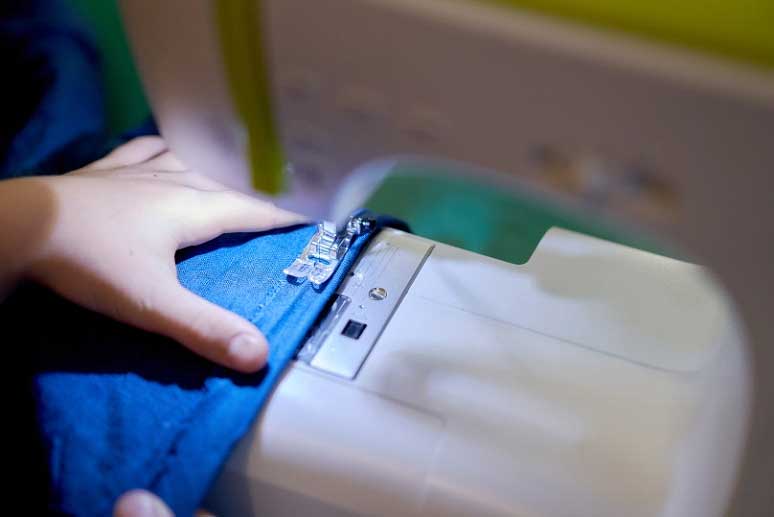
India poised to dominate global textile and apparel manufacturing
Emphasis should be put upon on increasing the production capacity of all types of raw materials including Cotton and MMF, suggests T Rajkumar.
Indian Textile & Apparel (T&A) Industry holds prominent importance for the Indian Economy as it not only generates huge employment opportunities but also bring a considerable foreign exchange and attracts Foreign Direct Investment (FDI) into the country which plays a key role in advancing the country’s manufacturing infrastructure and capabilities and thus reviving the lives of the people socio-economically.
During the financial year 2021-22, under the leadership of Piyush Goyal, Union Minister of Textiles, Indian Textile & Apparel Industry achieved its highest ever exports of $ 43.4 billion. However, since then, Indian Textile Sector is witnessing stagnation in production and trade due to various reasons such as high volatility in raw material prices, uncertainties emerging due to geopolitical conflicts like the on-going Russia-Ukraine war, reorientation of supply chains and high inflationary pressures in countries like USA, EU which are one of the major markets for Textile & Apparel products. All these factors together have affected the Textile & Apparel markets globally. The same can be witnessed in the declining exports. As per the latest quick estimates released by the Ministry of Commerce, India’s Textile & Apparel exports have declined by about 10.51 per cent during April-August 2023 as compared to the same time period of the previous year.
However, amid the gloomy economic outlook, Indian T&A Industry which is the 2nd largest T&A industry in the world is extremely hopeful for a positive outlook in the coming future. Industry is confident that the inherent strengths of India’s Textile Industry i.e. its good raw material base, skilled workforce, improved global positioning and growing strategic alliances, India will bounce back strongly to become a $ 350 billion industry including $ 100 billion exports, in the coming years.
While the industry is playing its role in taking the Indian T&A industry to new heights, our Government too has realised the true potential of the sector and accordingly, under the dynamic leadership of Prime Minister Narendra Modi. Government is taking considerable policy measures to strengthen the Indian textile sector like:
⦁ Production Linked Incentive Scheme and PM MITRA: Aimed at bringing production scale and making global champions of Textiles.
⦁ Trade agreements with major markets: Government has recently signed the trade agreement with UAE and Australia and many others with major markets like EU, UK, Canada are in pipelines.
⦁ Skilling programmes and Initiatives on ESG.
While the above schemes will lay the foundation stone of a strong textile sector, industry feels that there are several other policy initiatives which can further catalyse the growth of Indian Textile sector towards achieving its target of market size of $ 350 billion including $ 100 billion exports by 2030, such as:
⦁ Fast tracking of FTAs with strategic partners like EU, UK, Canada. For EU, industry is open for a zero for zero for the entire textile value with strong rules of origin and Regional Value addition to avoid any circumvention of trade.
⦁ New investment incentivisation schemes to encourage scaling up, innovations, and sustainable technologies. Schemes like TUFS played a key role in modernisation of Indian Textile Sector. However, after its expiry in March 2022, Government is yet to come with any alternate scheme of TUFS and hence, Government may expedite the same. Similarly, the PLI scheme will prove to be a game changer for the Indian Textile Industry. However, the investment threshold and product coverage under the existing PLI limits its benefit to large industries only. Since the Government is considering the announcement of PLI 2.0, the same may be announced without any delay and with lower investment threshold & wider products coverage.
⦁ Government of India is coming up with various Quality Control Orders which are aimed at improving the quality of the textile & apparel products. Government should ensure that implementation of QCOs does not result in any supply disruption through a more gradual process of introduction and QCOs should not be applicable on products which are not available (or have a limited availability) in domestic market.
⦁ 11 per cent cotton duty imposed on the cotton during the budget 2021 came as shock for the entire textile industry and resulted in the increased prices of cotton in the domestic market as traders start calculating the domestic prices based on the Import Price Parity. It affected the cost competitiveness of the Indian cotton sector which also resulted in the decline of the exports. Industry since then has been requesting the Government to consider removing the import duty from cotton as India mainly imports ELS cotton variety not available in India and hence imposition of import duty is not in anybody’s interest. We are extremely hopeful of a favourable decision in this regard.
As we talk of almost doubling the market size of Indian Textile Industry by 2030, emphasis should also be put upon on increasing the production capacity of all types of raw materials including Cotton and MMF and addressing various other related issues thereof:
For cotton, Government may implement the Technology Mission on Cotton 2.0 at the earliest with focus on:
⦁ Advanced seed development
⦁ Faster approval of available seed varieties for commercial use
Similarly, for MMF raw materials, Government should incentivise and ensure the capacity creation across the entire MMF value chain and also address the various regulations and compliances that the global buyers are asking for.
To conclude, Indian Textile & Apparel Industry is well established. With a unique advantage of having the entire textile value chain under one roof, Indian Textile & Apparel Industry also has production processes capable of handling deliveries in small lots to bulk lots at the same time. India has already showcased the world about its manufacturing potential and looking at the various socio-economic changes taking place globally, it will be not be wrong to say that it is the right time for the Government and the Industry to work in close collaboration with each other towards achieving the desired target market of $ 350 billion by 2030 and making India as one of the most preferred and largest destination of Textile & Apparel manufacturing in the world.
About the author

T Rajkumar is currently the Chairman of the Confederation of Indian Textile Industry (CITI), and he is the Chairman of Textile Sector Skill Council (TSC). He is a Director in National Skill Development Corporation.



